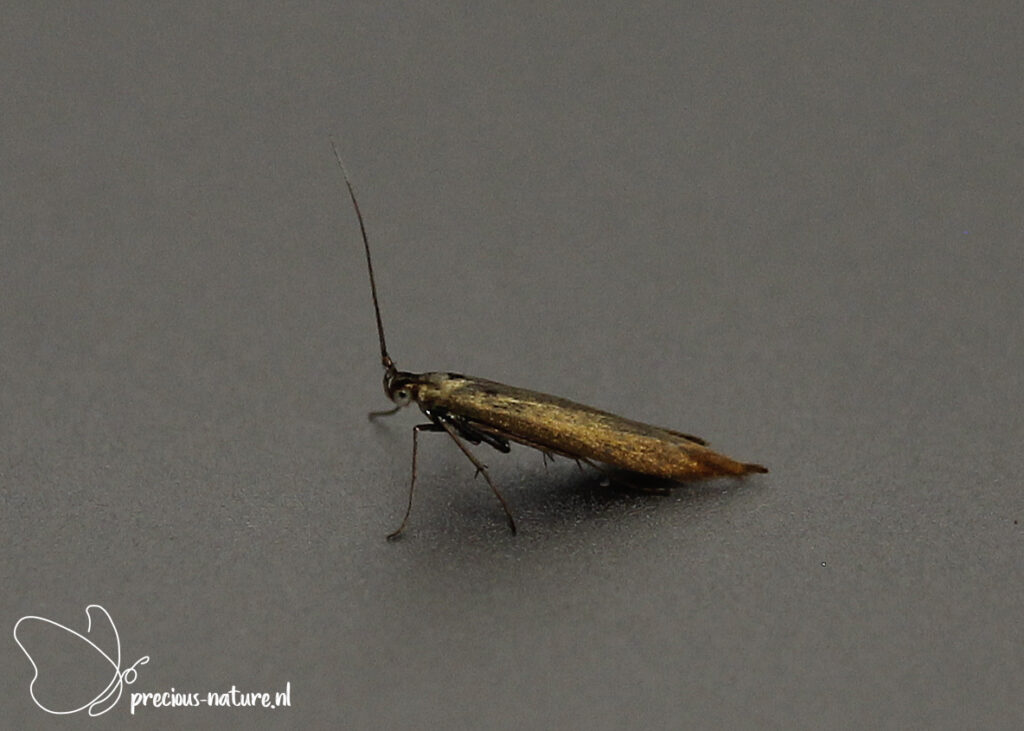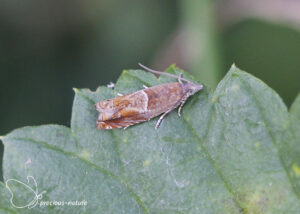Casebearer moths (Coleophoridae) are small to medium-sized moths with a wingspan of 5 to 20mm. The scientific name means ‘bag carriers’ because the caterpillar generally lives in a homemade bag. This bag, or tube, usually consists of leaf fragments or hollowed-out seeds or seed capsules, in which the caterpillars move over the food plant. Leaves are mined, or seeds and flower buds are eaten. Pupation typically occurs within the bag. Casebearer moths can be found in all kinds of biotopes: deserts and steppes, salt marshes, forests, limestone slopes, heaths, and arctic tundras, from sea level to high in the mountains. They are distributed all over the world, except on the islands of the South Pacific. About 1600 species have been described worldwide. Some species cause damage in monocultures if they occur en masse, such as the yellowing of entire larch forests.
Genus: Coleophora
Clover Case-bearer – 2022 (NL)
(NCBI-index: 1.150030)
Many Casebearer moths are difficult to distinguish from each other. Because of the metallic sheen of the Clover Case-bearer (Coleophora alcyonipennella) when the sun hits it, I’m pretty sure I’ve identified the right species. The similar Large Clover Case-bearer (Coleophora trifolii) and Red-clover Case-bearer (Coleophora deauratella) have a slightly different appearance. The forewings have a light red speckle that changes into a reddish sheen at the wing tip. The antenna is black, with the last part transitioning to a grey-white colour at the end. The flight period spans two generations, from May to August, and the wingspan ranges from 11 to 14 mm. Host plant: Clover. Dutch name: Metaalkokermot. Frisian name: –
Flying period:






